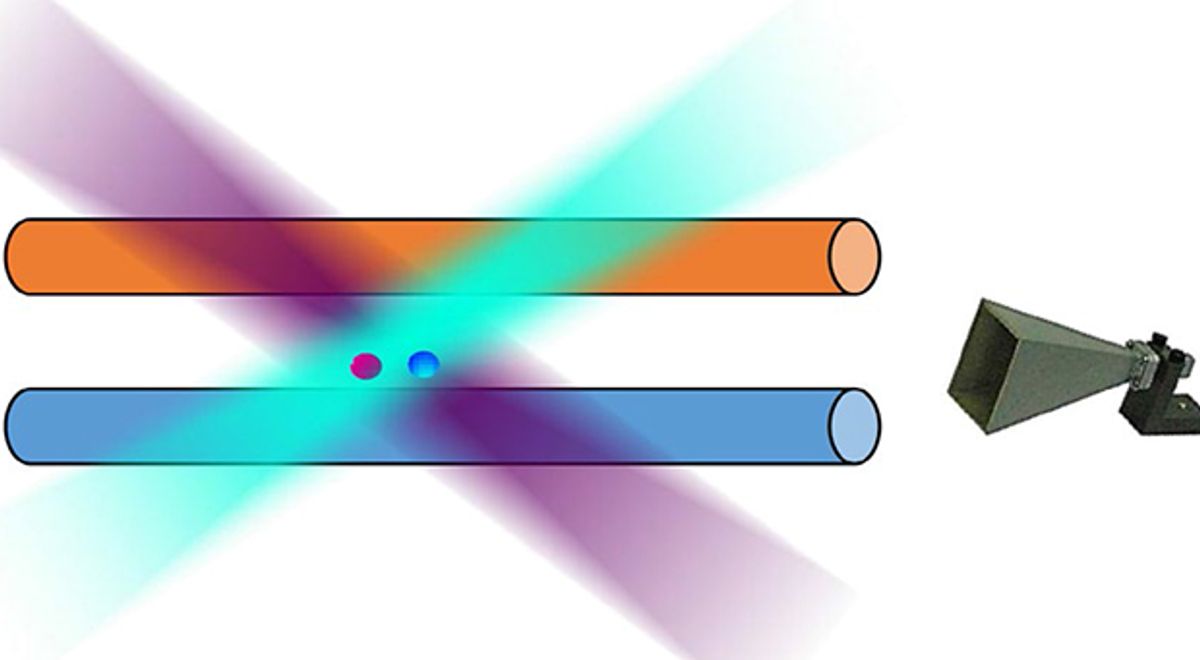A quantum computer can theoretically vastly outperform a normal computer, but until now its basic component, known as a qubit, could only remain stable for less than a minute. Now scientists in China have developed single qubits that could remain coherent for about 10 minutes. These magnetically trapped qubits could someday become an essential component of quantum computers and quantum networks.
The quantum effect known as superposition permits a particle to essentially spin in two opposite directions at once, or exist in two or more places simultaneously. Using superposition, qubits can symbolize data as both a one and zero at the same time, whereas transistors in standard computers are each limited to representing data as single digits. When qubits are linked or entangled together, they can help perform exponentially more computations than a comparable number of transistors.
But qubits are only useful if their superpositions can stay coherent or stable. More than 20 years ago, scientists found they could achieve coherence times of roughly 10 minutes with ensembles of magnetically trapped ions. However, unexpectedly, when it came to single qubits, researchers were cursed with much shorter coherence times. Until now, the best coherence time they could accomplish was less than one minute with solitary magnetically trapped ions.
Now scientists at Tsinghua University in Beijing have achieved a coherence time of more than 10 minutes for a single qubit consisting of a magnetically trapped, positively charged ytterbium-171 ion.
"What we have demonstrated is basically how the memory zone for quantum memory, one essential part of a quantum computer, can be physically implemented," says study senior author Kihwan Kim, a quantum physicist at Tsinghua University.
Kim says the reason that prior experiments with ensembles of ions were able to achieve long coherence times was because they were performed using large magnetic traps, whereas previous research with single ions used much smaller magnetic traps. As such, the electrodes used to analyze the ensembles were relatively far away, while the electrodes used to analyze the single ions were much closer. This meant the amount of heat the ensembles experienced from the vibrational motion of atoms in the electrodes was a few million times less than what the single ions felt, Kim says. Such heat can disrupt coherence.
In order to keep their qubits relatively cool, the scientists placed a positively charged barium-138 ion in the same magnetic trap with each ytterbium-171 ion. Whenever the barium-138 ion collides with the ytterbium-171 in the trap, it absorbs some of its vibrational motion, cooling it down.
"Before us, no one performed such 'sympathetic cooling' for single ions to observe long coherence times in a trap for quantum information processing," Kim says.
The researchers also suppressed the level of disruptive noise that each single qubit experienced from fluctuations in the magnetic fields used to trap them. This also helped prolong their coherence time. The scientists detailed their findings today in the journal Nature Photonics.
The group is now exploring ways to further reduce noise in their system, such as by installing a shield to protect ions from those magnetic field fluctuations. Kim notes, "the coherence time after we eliminate the heating problem is still limited to 10 minutes. We are not yet fully sure the main reason for this limitation."
Charles Q. Choi is a science reporter who contributes regularly to IEEE Spectrum. He has written for Scientific American, The New York Times, Wired, and Science, among others.



